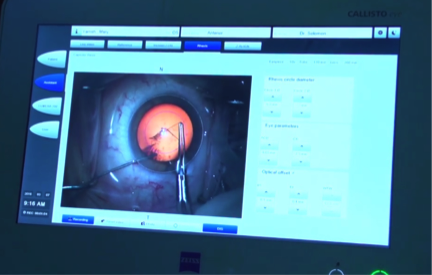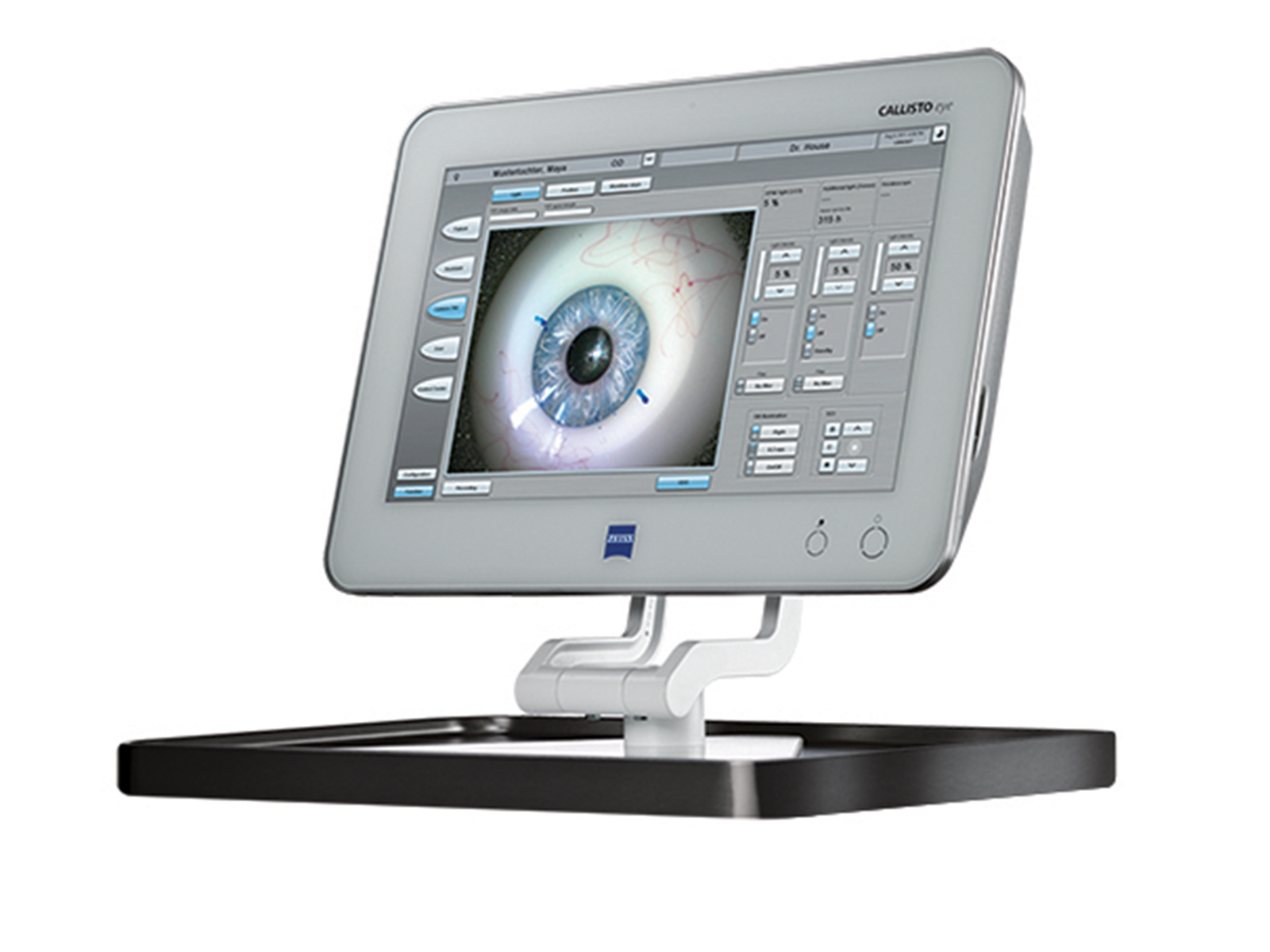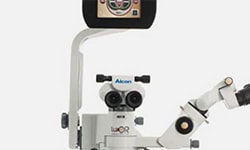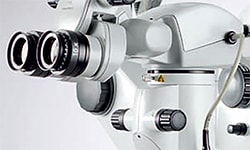Editorially Independent Content
CALLISTO eye (Carl Zeiss Meditec) is a component of the ZEISS Cataract Suite markerless (Carl Zeiss Meditec) that provides intraoperative alignment tools and displays biometric data from preoperative diagnostics captured by the IOLMaster 700 (Carl Zeiss Meditec). It integrates with OPMI LUMERA 700 (Carl Zeiss Meditec) in the operating room to provide superimposed reference marks for the capsulorhexis and toric IOL alignment. The graphical overlays are projected through the eyepiece of the surgical microscope as well as on touchscreen heads-up displays.
How it Works
Preoperative measurements and photos from the IOLMaster 700 are input into CALLISTO eye via USB or wirelessly if used in conjunction with the Zeiss Forum. The information provided by the IOLMaster 700 with the swept-source OCT is unparalleled and is easily referenced in the operating room via a user-friendly touchscreen display. The interface provides corneal thickness, a high-resolution infrared image of the iris, astigmatism overlays, reflections off the corneal surface, lens thickness, and even foveal contours. When the patient is brought under the OPMI LUMERA 700, the CALLISTO eye automatically registers the eye based on landmarks identified preoperatively by the IOLMaster 700.
In addition to the AMO Calculator, we rely on the CALLISTO eye system to execute surgical plans with accuracy. We have found that using the CALLISTO eye guidance system is more accurate compared to intraoperative aberrometry measurements.
Master Guidance
While I often use a femtosecond laser to create a capsulotomy, the CALLISTO eye overlay guidance is helpful when making the capsulorhexis in manual cataract cases, particularly so when young physicians in training are observing.

The CALLISTO eye toric alignment overlay displays three parallel lines over the appropriate axis. For optimal outcomes, I use a Sinskey hook or the soft I/A tip to align the lens on one of the lines rather than within the bars. I am confident that the IOL will be positioned properly because the overlay alignment bars are oriented based the data from the IOLMaster, which I believe to be the leader in the field with regard to preoperative biometric data. Nevertheless, I often mark the eye with the RoboMarker (Surgilum) preoperatively just in case registration is lost. The Robomarker is a self-leveling corneal marker that uses sterile disposable tips primed with infrared ink, which lasts for up to two hours.
In the past we used the ORA System (Alcon) to obtain final measurements and intraoperatively confirm toric alignment, however we no longer feel the need to do that in most cases when preoperative data is synced with CALLISTO eye. At our center the majority of surgeries are performed in a single operating room so the extra time it takes to obtain intraoperative measurements compounds throughout the day. CALLISTO eye’s seamless integration with preoperative data and suburb ease of use provides an extra measure of efficiency in each case.





